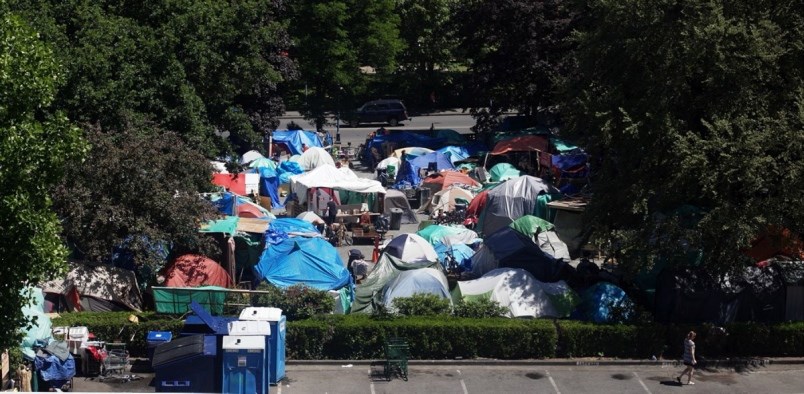Forty years ago, I wrote about two principles that I considered fundamental to the health of the population: Ecological sanity and social justice. If we do not pay attention to these principles and what we now call the ecological and social determinants of health, the health of the population will be seriously harmed.
Last week, I wrote about the first of these as an election issue — we are acting in Canada in an ecologically insane manner, and it threatens our health, especially the health of today’s young people. Today, I turn to the issue of social justice, especially as represented by poverty, where yet again, young people are the most at risk of harm.
It is hardly a secret, nor a revelation, that poverty is bad for health. So you would think any government, and any party wanting to be the government, would make this an important area of focus. But persistent inequality surely tells us that the Liberals and Conservatives — who between them have always formed the government in Canada — simply don’t care about poverty and its harmful effects upon the health of Canadians. If they did, they would have done something to fix it.
As it happens, the Victoria Foundation released its excellent Vital Signs report last week, so we have a good picture of poverty in Victoria.
Compared with the overall poverty rate in B.C. as a whole and in Canada, we do quite well, but that is hardly a basis for satisfaction or complacency. The overall poverty rate for Greater Victoria was 14 per cent — one in seven people here live in poverty.
The rate among children is higher, at 16 per cent, and double that for single-parent families, almost one in three of whom live in poverty. So much for the federal Parliament’s pledge to eliminate child poverty by the year 2000.
The lowest rate is among seniors, at 10 per cent — which raises the question of why it seems to be OK for children to experience more poverty than their grandparents.
Moreover, living above the poverty line is hardly an easy life. B.C.’s minimum wage under the New Democratic Party government has gone up to $13.85 an hour, just enough to lift a single person working full-time for a full year above the poverty line. But the living wage — the hourly wage needed for a family of two working parents with two young children if they are to maintain an adequate quality of life in this region — is $19.39 an hour.
In addition to these direct measures of poverty, we must also be concerned about the degree of inequality in society. The 2016 report by the Canadian Index of Wellbeing (CIW) program at the University of Waterloo notes: “Unequal income distribution is detrimental to the wellbeing of Canadians because it is related to financial instability and poorer economic growth.”
Unequal distribution of income is measured by the Gini coefficient, where “a score of zero would represent a perfectly equal distribution of income” — so the lower the score the more equal the distribution.
Using Statistics Canada data, the CIW reports the Gini coefficient in Canada has risen from 0.290 in 1994 to hover between 0.312 and 0.322 since 2000; it was 0.319 in 2014. The Organization for Economic Co-operation and Development reports it was 0.31 in 2017, not as unequal as the United Kingdom (0.36) and the United States (0.39), but much more unequal than Finland and Belgium (0.27) or Norway, Denmark and Iceland (0.26).
But the evidence is clear that rich countries that have lower levels of inequality do better on a wide range of health and social outcomes. In other words, reducing poverty is good for the country as a whole, for everyone, not just for those living in poverty.
These levels of poverty and inequality are a disgrace in a country this rich and supposedly socially aware. So ask your candidates what is your party’s plan — not hopes and wishes and intentions, but actual plan — to eliminate child poverty in Canada, and to reduce levels of inequality and poverty to be at least equal to the best performing countries in the OECD.
Because if they don’t have such a plan, it is clear they do not take the health of Canadians seriously.



